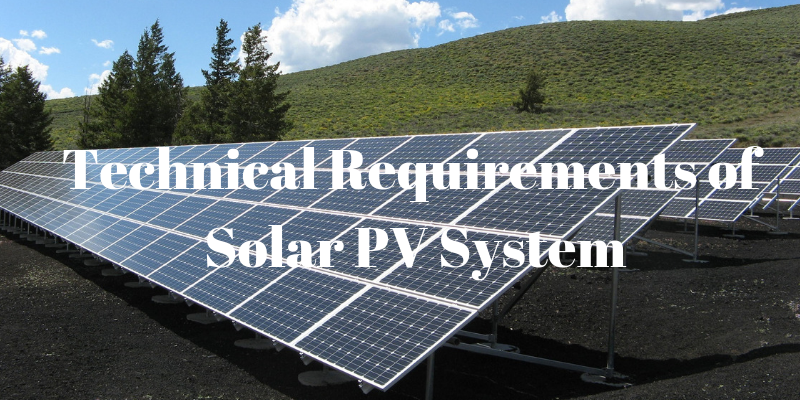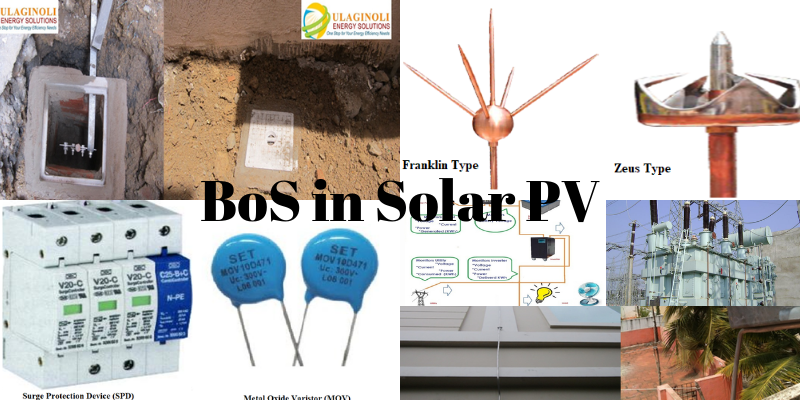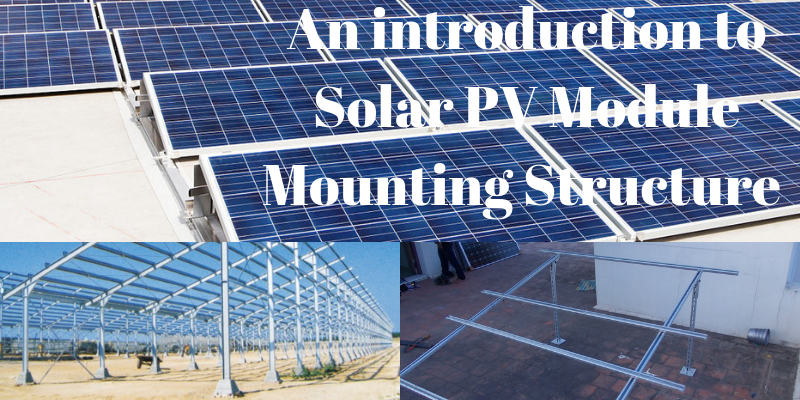Wind and Solar To Answer the Call for Mobiles
London, UK — Of the world’s 6.8 billion people only 4 billion are already using mobile phones. The next 2 billion mobile phone users will come from rural areas, largely in developing countries, and tapping this rural developing market will require new and different infrastructure. While infrastructure for very low cost coverage solutions is nearing readiness, a key challenge is achieving mobile voice coverage in rural areas without reliable power.

Over 99% of cell sites worldwide are deployed with diesel generators as a backup or as the primary source of electrical power. But the operating expense involved in keeping the diesel fuel flowing can be prohibitive, especially in light of increasingly remote base station sites and rising theft of diesel fuel and generators.
Economics has favoured diesel generators due to their low capital cost, but as the cost of diesel fuel has risen and the cost of solar panels and wind turbines has dropped, the return on investment (ROI) equation is changing. It is now set to flip in favour of renewable energy by 2014 – when the payback of the cost of an off-grid renewable power plant will have dropped to less than a year.
Government agencies around the world are proactively promoting the use of renewable energy and such programmes are expected to create a supply chain with sufficient scale to bring down costs, create high-quality products, and eventually export green power solutions to developing nations.
By 2015, an installed base of 1.9 million mobile telecom sites will be candidates for green power upgrades or retrofits, with a compelling ROI driving operators to choose solar and wind power.
Market Overview
The market is well established for diesel generators, battery backup systems, rectifiers and other accompanying infrastructure. Over 850,000 cell-site power systems were expected to be shipped in 2010, so large economies of scale have already been applied to traditional power systems.
Still, the economics of a GSM base station with redundant power systems are not suitable for a rural village in Africa. In addition, existing cell sites in many countries suffer from unreliable power, requiring a lot of diesel fuel to keep the sites running. The addition of wind or solar power to a base station can also reduce the operating costs for any site that uses a significant amount of diesel fuel – and over 1 million sites today fit that description.
For huge areas of the developing world, the electrical grid is inadequate to deal with the growth in demand over the past 20 – 30 years. Some areas, such as a few suburban regions of India, simply schedule electrical power to rotate through different zones, providing a fairly reliable supply, but only for a few hours each day. Other areas, such as poor African countries and parts of southern Asia, have unreliable and unpredictable power.
In regions where the electrical power is scheduled, the preferred solution is to employ a set of deep?cycle batteries as the daily source of backup power, simply charging the batteries from the grid. Where power is less predictable, diesel generators are by far the preferred method. Redundant, multiple generators are the most common approach, so maintenance can be addressed off?line.
Grid power, diesel fuel and other commodities are priced differently in each market around the globe. Renewable energy can therefore be very cost-effective in some applications, but a poor ROI in others. In general, if electrical grid power is available to the cell site, then the wireless operators choose to use it.
Rate of Return Calculations
The ROI calculation for an on-grid cell site is really no different than the calculation for an industrial utility application of renewable energy: an investment of US$50,000 for a 5 kW photovoltaic array will require 50 or more years to be paid off, with an average 2.5 kW load. Because most operators are considering investments in radio equipment, spectrum and handsets that pay off nearly immediately, investing in wind or solar power is often considered a poor use of capital for developed economies.
The economic equation changes in a developing country, where diesel fuel is used extensively to power cell sites. Instead of an inexpensive energy cost of $0.07/kWh, the effective cost of diesel fuel can be double or even triple the market price due to storage and transport as well as theft. The average effective cost of diesel fuel for emerging-market telecom sites hit about $1.90 per litre in 2010.
Economics change once again for GSM sites which are scaled back in power level and therefore cover a shorter range. Diesel generators to handle a 100-200 W power load and run every day are not economical, and run less efficiently with a low load level. In the end, a 500 W solar array and a set of deep-cycle batteries to last for several days can be roughly the same cost as a diesel generator, allowing for almost instant return on investment.

Solar technology has been used in remote telecoms applications since the 1970s (Source: Tenesol)
Renewable energy has been used in telecommunications sites for over 25 years, with hundreds of sites using wind and solar power today. However, only a small fraction of the world’s off-grid and ‘poor-grid’ mobile telecom sites use wind or solar power.
The business of deploying base stations around the world has evolved so that a wide variety of players take part through multiple business models. Recently, the trend toward turnkey services for operators has opened up the market for new deployment of wind turbines and solar panels; power plant vendors arrange long-term contracts (10 years or more) with the operators and therefore the power plant supplier can choose the most economical solution for the long term, not just the solution with the lowest capital cost. Eltek Valere, Winafrique and Dantherm Power are examples of companies that support operators in a turnkey business model.
China, India and Africa
China Mobile, the largest mobile operator in the world at 530 million subscribers, has deployed more than 800 cell sites using solar power in western China and Tibet.
Working closely with Huawei Technologies, China Mobile has taken advantage of the high altitude of the Himalayan sites in order to provide widespread GSM service with relatively small solar panels.
The three largest operators in China – China Mobile, China Unicom and China Telecom – together have over 10,000 sites that operate without grid power, and the solar deployment in Tibet has been viewed by the big three operators as a test case for diesel-generator replacement throughout less developed regions.
In April 2010 the government of India initiated a programme to promote solar power in the telecom sector. Under this programme, between 30% and 50% of the cost of solar retrofits will be subsidised, dramatically improving the ROI.
In all, over 250,000 towers are expected to be outfitted with solar panels, reducing diesel use by as much as 2 billion litres per year. Infrastructure companies have confirmed that very aggressive deployment plans are underway, but instead of 10-20,000 sites in the second half of 2010, Mobile Experts LLC’s research suggests that supply chain and personnel limitations allowed for only about 3500 sites during 2010. During 2011, another 8000 sites are possible as the supply chain ramps up.
Deployment in India over the next five years will be wholly dependent on government subsidies, tax breaks and programmes. The government will allow accelerated depreciation of solar assets, so that 80% of the investment will be depreciable in the first year. The Department of Natural Resources has established a subsidy pool of $50—60 million to draw upon, with companies expected to be reimbursed by 30%—50% of the cost of solar arrays.
So far, the deployment of renewable energy in Africa has been sporadic, with deployment devoted mostly to extremely remote sites. In many areas, diesel transport logistics and theft make the effective cost increase dramatically outside of major cities.
Nonetheless, so far, mobile operators in Africa have been reluctant to invest heavily in large numbers of remote sites, with the power system representing one of the most costly items in terms of both capital and operational expense. The acquisition of Zain by Bharti Airtel may open up a new avenue for investment, as Bharti expects to bring its experience with low-power GSM sites from India into the African market over the next five years.
Another positive factor is Certified Emissions Reductions (CERs), each equivalent to 1 tonne of carbon dioxide and available to wireless operators that deploy solar. The carrier must demonstrate that the site would use a specified amount of diesel fuel per year (up to 20,000 litres) to convert each litre of diesel fuel to 2.69 kg of CO2. It is clear that carbon credits are a major motivator for Indian carriers as well as those in Bangladesh and the Middle East. Carbon credits for base stations (through reduction of diesel fuel usage) are expected to become a routine method of offsetting the capital costs.
Power Requirements
Cellular base stations cover a huge range of requirements, ranging from 50 W to 500 kW. The most common case has a typical demand of 1.5 kW per station and a relatively high transmitter power to cover a few square kilometres with four to six channels of capacity (enough for 32-48 simultaneous voice calls). Roughly 60% of the off-grid base station market currently falls into this category, with major programmes sponsored by the Indian government, China Mobile and other key players.
Typical wind turbine deployment for telecom applications utilise smaller models of turbine, normally either multiple 1 kW turbines (on mounting brackets and an existing tower) or a 7.5 kW turbine (on its own tower) are deployed. Solar technology has been used in remote telecom applications since the 1970s, especially in long-haul repeater deployment. For almost all of the deployments so far, crystalline silicon technology has been used.
The Changing Outlook
During the past 10 years, the ROI for solar panels and wind turbines has been steadily moving in a positive direction. There are two primary ROI calculations to consider. For on-grid sites, the most relevant calculation weighs the capital cost of a wind turbine or solar panel, along with the necessary battery bank, against the cost savings for electrical power. For off-grid and poor-grid sites, the key comparison is between the capital cost of a renewable-energy plant (with one diesel generator) against both capital and operating costs for redundant generators.
In the real world, the ROI calculation will not always be fully ‘on grid’ or fully ‘off grid’. In regions where power is scheduled in a dependable way, with at least three to four hours of electrical power per day, the cheapest solution often involves a 12-hour battery bank that is charged daily.
The number of off-grid and poor-grid base stations will see a strong increase through 2020, with continued deployment of traditional base stations in emerging nations, and new growth dynamics driven by low-power mobile base stations.
Diesel generators remain the primary choice for powering off-grid base stations, but the ROI is changing every year and government programmes starting in 2010 will begin to move the market in a new direction. Solar and wind-powered base stations will multiply appreciably through 2020 due to growing government incentives and falls in the cost of solar and turbine technology.
Diesel generators will also be the single most important ‘backup’ power source for sites where grid power is unreliable. In the case of a poor-grid deployment, in fact, the use of renewable power sources to back up the grid will be less important than for off-grid locations, because the cheapest and simplest solution may be to simply use battery backup power.
In many regions of India, China, Bangladesh and other countries, the limited electrical power is actually managed consistently, so that although not enough power is available to serve everyone, each region receives power on a predictable timetable. Therefore deep-cycle batteries can be charged daily. As a result, solar and wind power are green alternatives but not necessary solutions.
Sites with reliable grid power will not see a meaningful trend toward renewable power unless government bodies or emissions trading make the case for renewables technology more compelling. For most countries, even in 2020 the ROI for a solar-powered mobile site will remain in the range of 3 – 5 years, whereas a mobile operator can invest the same money in data services, applications or even rural sites to achieve a better return.
The ROI calculations suggest that renewable power will not become a mainstream solution during the next decade, but early adopters, government programmes and consumer grass-roots pressure will create opportunities for renewables even in the on-grid segment. And, even at a low percentage of adoption, the huge numbers of telecom base stations deployed in developed markets will drive a few thousand sites toward renewable energy.
New Renewable Energy Sites
In total, the number of sites deployed with renewable power will grow by an order of magnitude over the next decade. While about 1400 sites will be outfitted with some form of renewable energy this year, almost 40,000 sites will use renewable energy in 2020. This overall trend will be kick-started by government incentives, but the natural cost reduction of solar panels and wind turbines will take over in the 2014-2015 timeframe to make renewable energy more economic than diesel power.
The ROI associated with green energy investment may be compelling, but many operators in the developing world simply do not have the capital to make the investment. As an example, Bharti Airtel, Vodafone, Reliance and other operators in India have recently completed their 3G licensing process. These companies will be paying billions of dollars for spectrum, and to invest in the 3G network. There will be little capital budget left at these operators for investment in solar power. Therefore, it is anticipated that separate companies offering turnkey services will make those investments and offer an ‘OPEX Model’ to the mobile operators, in which the operator will pay a monthly fee for power at 99.5% uptime.
John Madden is a principle analyst at Mobile Experts LLC.
Courtesy: Renewable Energy World





